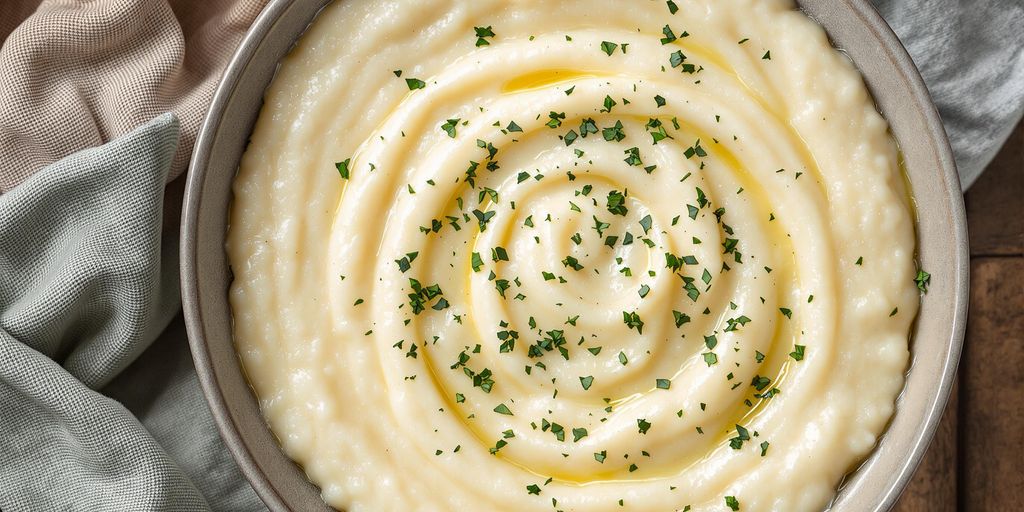Are Grits Good For Diabetics?

Grits are a staple in many Southern kitchens, but if you’re living with diabetes, you might be wondering if they’re a safe choice. Made from corn, grits are high in carbohydrates, which can affect blood sugar levels. However, not all grits are created equal. Choosing the right type, like stone-ground grits, and balancing them with other foods can make them a part of a diabetes-friendly diet. Let’s explore how grits can fit into your meal plan without spiking your blood sugar.
Key Takeaways
- Grits can be included in a diabetic diet if chosen wisely, especially stone-ground types.
- Balancing grits with proteins, healthy fats, and non-starchy veggies helps stabilize blood sugar.
- Portion control is crucial to prevent blood sugar spikes when eating grits.
- Processing methods affect blood sugar impact, with stone-ground grits being preferable.
- Expert advice and resources can help diabetics make informed choices about eating grits.
Understanding Grits and Their Impact on Diabetes
What Are Grits Made Of?
Grits are a classic Southern dish made from ground corn, and they come in different varieties like stone-ground, hominy, and instant. Stone-ground grits are the least processed and retain more nutrients, which is a plus for folks watching their blood sugar. Instant grits, on the other hand, are more processed and can cause a quicker spike in blood sugar levels.
Nutritional Breakdown of Grits
Here’s a quick look at what you get in a half-cup serving of grits:
- Calories: 175
- Carbohydrates: 38.7 grams
- Protein: 7 grams
- Fat: 6 grams
- Fiber: 2 grams
Grits are also packed with vitamins and minerals like niacin, riboflavin, and iron. But the high carb content means you gotta be careful if you’re managing diabetes.
Why Diabetics Should Care About Grits
For those with diabetes, it’s all about managing that blood sugar. Grits, being high in carbs, can affect your blood sugar, but choosing the right type and keeping an eye on portion sizes can help. Pairing grits with proteins and healthy fats can make a difference in how your body processes those carbs. Think of grits not just as a carb-heavy dish, but as something you can balance out with other foods in your meal. It’s all about grits and blood sugar control, really. So, if you’re into grits and diabetes management, it’s key to be mindful about how you include them in your diet.
Choosing the Right Type of Grits for Diabetics

Stone-Ground vs. Instant Grits
Let’s dive into the world of grits! If you’re wondering, “are grits good for diabetics?” the answer isn’t a simple yes or no. It depends on the type of grits you’re munching on. Stone-ground grits and instant grits are like night and day. Stone-ground grits are less processed, which means they retain more fiber and nutrients. This is crucial for anyone keeping an eye on their blood sugar. Instant grits, on the other hand, are more processed and can cause those unwanted sugar spikes. So, if you’re diabetic, reaching for stone-ground might be the better choice.
Benefits of Stone-Ground Grits
Stone-ground grits are like the hidden gem of the grit world. They take a bit longer to cook but boy, are they worth it! These grits are packed with nutrients and fiber, which can help keep your blood sugar steady. Choosing whole grain grits for diabetics can be a game-changer. The fiber content not only aids digestion but also helps in managing blood sugar levels, making it a win-win for your health.
How Processing Affects Blood Sugar
Processing matters big time when it comes to grits. The more processed they are, the less fiber they have, and the quicker they turn into sugar in your bloodstream. That’s why instant grits can be tricky for diabetics. They might be convenient, but they could lead to those pesky sugar spikes. To keep things stable, it’s smart to choose less processed options like stone-ground grits. Remember, it’s not just about what you eat, but how it’s made that counts!
When it comes to grits, it’s all about making informed choices. Opt for the least processed options to enjoy your grits without the worry of blood sugar spikes. It’s all about balance and understanding what works best for your body.
Balancing Grits in a Diabetic Diet

Portion Control Tips
Alright, so you’re thinking about adding grits to your meal plan, huh? That’s awesome, but let’s chat about portion control first. Grits are high in carbs, which means they can spike your blood sugar if you’re not careful. Keeping your portions in check is key. Think of it like this: instead of filling up your whole plate with grits, try sticking to about a half-cup serving. This way, you can still enjoy them without overdoing it.
Pairing Grits with Proteins
Now, let’s talk about pairing grits with proteins. Ever tried grits with scrambled eggs or some grilled chicken? It’s a game changer! The protein helps slow down the absorption of carbs, making it easier to keep your blood sugar stable. Plus, it’s super filling, so you won’t be reaching for snacks an hour later.
Incorporating Healthy Fats
Don’t forget about adding some healthy fats to the mix. A little avocado or a sprinkle of nuts can do wonders. Healthy fats not only add flavor but also help you feel satisfied. They play a role in balancing blood sugar too, which is great news if you’re managing diabetes. So next time you whip up some grits, remember to toss in a bit of healthy fat for a more balanced meal.
Balancing grits in your diet doesn’t have to be tricky. With the right portions and pairings, you can enjoy this Southern staple while keeping your health in check. Just remember: moderation and balance are your best friends when it comes to enjoying low glycemic index grits for diabetics and making them part of a nutritious meal plan.
Cooking Grits the Diabetic-Friendly Way
Using Water or Broth Instead of Milk
Cooking grits with water or broth is a smart move for anyone watching their blood sugar. Milk can add extra carbs and calories that you just don’t need. Switching to water or a low-sodium broth can keep your grits light and diabetic-friendly. Plus, broth can add a nice savory flavor without the extra carbs.
Adding Flavor Without Extra Carbs
Who says you need to load up on butter and cheese to make grits tasty? Instead, try adding spices and herbs. A sprinkle of garlic powder or a dash of paprika can do wonders. Fresh herbs like parsley or thyme can also brighten up your dish. These options keep your grits flavorful and diabetic-friendly without adding unwanted carbs.
Recipe Adjustments for Better Health
If you’re looking to make your grits healthier, consider these easy tweaks:
- Use stone-ground grits: They have more fiber than the instant kind.
- Limit portion sizes: Stick to about half a cup to keep your carb intake in check.
- Pair with proteins: Serve your grits with eggs or lean meats to balance out the meal.
Making small changes to how you cook and serve grits can have a big impact on your blood sugar levels. It’s all about balance and smart choices.
Cooking grits doesn’t have to be a challenge if you’re diabetic. By making a few simple changes, you can enjoy this Southern staple without the worry. Remember, it’s not just about what you eat, but how you prepare it that makes a difference.
Expert Opinions on Grits and Diabetes
Insights from Nutritionists
Nutritionists often point out that the type of grits you choose can make a big difference, especially if you’re managing diabetes. They usually recommend stone-ground grits because they have more fiber and nutrients, which help keep your blood sugar steady. Stone-ground grits are less processed, making them a better option for those watching their blood sugar. It’s also important to eat grits as part of a balanced diet that includes enough protein, healthy fats, and lots of non-starchy veggies.
Advice from Diabetic Educators
Diabetic educators stress the importance of keeping an eye on your blood sugar levels when you eat grits. They suggest pairing grits with low-carb foods and keeping portions small to avoid spikes in blood sugar.
Here are some tips they often share:
- Always check your blood sugar before and after eating grits.
- Mix grits with foods that have a low glycemic index.
- Learn how different foods affect your blood sugar levels.
Research Findings on Grits
Research shows that the way grits are prepared can really change how they affect your blood sugar. Studies highlight that stone-ground grits, which are less processed, tend to have a lower glycemic index than instant types. This means that choosing the right grits can be a big part of managing diabetes effectively.
Grits can definitely be part of a diabetic-friendly diet, but it’s all about making smart choices. Opt for the less processed kinds, keep portions in check, and balance them with other nutritious foods. Enjoy carbohydrate-rich foods like grits as part of a balanced diet, as supported by the American Diabetes Association.
Practical Tips for Enjoying Grits with Diabetes
Monitoring Blood Sugar Levels
Keeping an eye on your blood sugar after eating grits is super important. It gives you a clear picture of how your body reacts and helps you tweak your diet if needed. Consider keeping a log of your blood sugar readings to discuss with your healthcare provider. This way, you can get personalized advice.
Adjusting Recipes for Health
Tweaking your grit recipes can make a big difference in managing diabetes with grits. Here are some easy swaps:
- Use water or a low-fat broth instead of cream.
- Stir in fresh herbs like parsley or thyme for added flavor.
- Mix in veggies like spinach or tomatoes for a nutritious twist.
Educational Resources for Diabetics
Learning about diabetic-friendly diets can really help you make better food choices. Look for resources like books, websites, and cooking classes tailored for diabetics. These can offer insights into safely and deliciously incorporating grits and other foods into your diet.
Remember, managing diabetes with grits is all about balance. Choose the right type of grits, watch your portions, and pair them wisely with other foods. This way, you can enjoy them without worry.
Health Benefits of Grits Beyond Carbohydrates
Fiber Content and Digestive Health
Alright, so grits aren’t exactly the fiber champions of the world, but don’t count them out just yet. If you go for the less processed kinds, like stone-ground grits, you might just bump up that fiber content a notch. Fiber is super important for keeping your digestive system in check. It helps prevent constipation, which nobody likes, and can even help regulate blood sugar and cholesterol levels. Plus, it makes you feel full, so you might end up eating less overall. Not too shabby for a bowl of grits!

Potential Heart Health Benefits
Grits pack a punch with some essential vitamins and minerals. We’re talking niacin, riboflavin, thiamine, folate, vitamin B6, iron, zinc, phosphorus, and magnesium. These little guys help keep your heart ticking by supporting various body functions and reducing the risk of heart disease. So, next time you’re enjoying grits, remember you’re also giving your heart a bit of love.
Grits as Part of a Diverse Diet
Including grits in your meals can be a great way to get some energy because of their carbohydrate content. But it’s all about balance, especially if you’re dealing with diabetes. Pair your grits with other nutritious foods, and you’ve got yourself a diverse and healthy diet. Remember, the key is to keep those blood sugar levels steady while enjoying your favorite Southern staple.
Grits might not be the first thing that comes to mind when you think of “healthy,” but with the right choices, they can definitely be part of a balanced diet. So go ahead, enjoy your grits, and know you’re doing something good for your body.
Incorporating Grits into Balanced Meals
Combining Grits with Low-GI Foods
Alright, so if you’re thinking about adding grits to your meals, it’s all about balance. You wanna pair them with foods that have a low glycemic index (GI) to keep your blood sugar in check. Think leafy greens, nuts, or some lean proteins. These guys can help slow down how fast your body absorbs carbs, keeping those sugar levels steady.
Examples of Balanced Meals
Let’s get into some meal ideas:
- Breakfast: Whip up some grits with scrambled eggs and a handful of spinach. It’s a solid start to your day.
- Lunch: How about a bowl of stone-ground grits with grilled chicken and a mix of veggies? Simple and tasty.
- Dinner: Serve grits on the side with baked fish and a fresh salad. It’s all about variety.
Tips for Cooking Grits
Cooking grits can be a breeze if you know a few tricks:
- Use water or a low-fat broth instead of milk to keep things light.
- Spice it up with herbs instead of salt – think parsley or thyme.
- Toss in some veggies like tomatoes or bell peppers for extra flavor and nutrients.
Grits can totally be part of a healthy meal plan. Just remember, it’s about how you prepare and pair them. Keep it simple, keep it balanced.
Understanding the Glycemic Impact of Grits
How Grits Affect Blood Sugar
Alright, let’s dive into the nitty-gritty of grits and blood sugar. So, grits are made from corn, which means they’re packed with carbs. And we all know that carbs can send your blood sugar on a rollercoaster ride. But here’s the kicker: not all grits are created equal. The way they’re processed plays a big role in how they affect your blood sugar. Stone-ground grits, for instance, are less processed and have more fiber, which helps slow down the absorption of sugar into your bloodstream. This means they can have a gentler impact on your blood sugar levels compared to instant grits.
Managing Portion Sizes
Now, let’s talk about portion sizes. Even if you’re munching on the healthier stone-ground grits, eating a mountain of them is still going to spike your blood sugar. So, keeping an eye on how much you eat is super important. Here are some tips:
- Measure out your serving size before cooking.
- Use smaller bowls to help control portions.
- Pair your grits with low-carb foods to balance out your meal.
Balancing with Other Foods
Speaking of balance, pairing grits with the right foods can make a world of difference. Try adding some protein or healthy fats to your grits to help keep your blood sugar stable. Think of things like:
- A side of scrambled eggs or grilled chicken.
- Mixing in some avocado or nuts.
- Adding a sprinkle of cheese or a dash of olive oil.
Remember, it’s not just about the grits themselves, but how you incorporate them into your meal. By being smart about your choices, you can enjoy grits without sending your blood sugar into a tizzy.
Cultural Significance of Grits in the Southern Diet

Grits as a Southern Staple
Grits are not just food in the South; they’re a way of life. From breakfast tables to dinner plates, grits have carved out a special place in Southern culture. Their creamy texture and mild flavor make them a versatile dish that can be dressed up or kept simple. Whether you’re having them with butter and cheese or pairing them with shrimp, grits are a beloved part of the Southern culinary experience. This humble dish, rooted in Native American traditions, has grown to become a staple in homes across the region, celebrated for its ability to bring comfort and satisfaction.
Traditional Ways to Serve Grits
Traditionally, grits are served as a hearty breakfast, often accompanied by eggs, bacon, or sausage. But they’re not just for the morning meal. In many Southern households, grits make an appearance at dinner, too. Here are some classic ways grits are enjoyed:
- Breakfast: Served with butter, salt, and pepper, sometimes with a side of eggs or bacon.
- Lunch/Dinner: As a base for shrimp and grits, a dish that combines creamy grits with savory shrimp.
- Side Dish: Paired with fried chicken or fish, grits provide a comforting complement to these proteins.
Modern Twists on Classic Grits
While traditional grits hold a special place in Southern hearts, modern twists have brought new life to this classic dish. Chefs and home cooks alike are experimenting with grits, adding unique ingredients and flavors to create new culinary experiences. Some popular modern variations include:
- Cheesy Grits: Adding a variety of cheeses to enhance the creamy texture.
- Spicy Grits: Incorporating jalapeños or hot sauce for a kick.
- Vegetable-Infused Grits: Mixing in roasted vegetables for added flavor and nutrition.
Grits are more than just a dish; they’re a reflection of Southern hospitality and tradition. They bring people together, whether it’s around a family breakfast or a festive dinner. Embracing both the old and the new, grits continue to be a cherished part of Southern cuisine.
For more on the cultural roots of grits, check out their fundamental part of Texas cuisine, where they blend history and flavor in every bite.
Common Misconceptions About Grits and Diabetes
Debunking Myths About Grits
Let’s set the record straight: grits aren’t the villain some folks make them out to be. Sure, they’re high in carbs, but that doesn’t mean they’re off-limits for everyone with diabetes. Moderation is key. You can enjoy grits, just be smart about it. Think of them as a treat rather than a staple.
Understanding Carbs in Grits
Grits are made from corn, a starchy veggie, so yes, they’re high in carbs. But not all carbs are created equal. The type of grits you choose matters. Stone-ground grits, for example, have more fiber and nutrients compared to instant ones. So, if you’re going to indulge, go for the less processed option.
Why Moderation is Key
Eating grits in moderation is crucial for keeping blood sugar levels in check. Here’s a quick list to help you out:
- Opt for stone-ground grits when possible.
- Pair them with proteins or healthy fats to balance the meal.
- Keep an eye on portion sizes to avoid blood sugar spikes.
It’s not about cutting out grits entirely; it’s about finding a balance that works for you. Remember, food should be enjoyed, not feared.
Wrapping It Up: Grits and Diabetes
So, can you enjoy grits if you’re managing diabetes? Absolutely, but with a little bit of caution. The key is moderation and making smart choices. Opt for stone-ground grits when you can, as they have more fiber and nutrients, which can help keep your blood sugar in check. Remember, it’s all about balance. Pair your grits with proteins, healthy fats, and plenty of veggies to make a meal that’s both satisfying and diabetes-friendly. And hey, keep an eye on those portions! With a bit of planning, grits can still be a comforting part of your diet without causing chaos to your blood sugar levels. So go ahead, enjoy that bowl of creamy goodness, just do it wisely!
Frequently Asked Questions
Can people with diabetes eat grits?
Yes, those with diabetes can enjoy grits if they are careful. Choosing less processed types, like stone-ground grits, and keeping portions small can help manage blood sugar levels.
What exactly are grits made from?
Grits are made from ground corn. They are cooked with water, milk, or broth to create a creamy porridge.
Which kind of grits is best for someone with diabetes?
Stone-ground grits are a better choice for people with diabetes because they have more fiber and nutrients, which can help keep blood sugar stable.
How can people with diabetes include grits in their meals safely?
Diabetics can safely include grits by choosing stone-ground types, controlling portion sizes, and pairing them with proteins and healthy fats.
Why does the way grits are processed matter for blood sugar?
Processing affects the fiber and nutrient content of grits. Stone-ground grits are less processed and may have a smaller impact on blood sugar.
Is it okay to eat grits for breakfast if you have diabetes?
Yes, but it’s important to keep portions small and balance them with proteins and healthy fats to avoid blood sugar spikes.
What are some tips for cooking grits in a diabetes-friendly way?
Use water or broth instead of milk, add spices for flavor, and avoid high-calorie toppings like cheese and butter.
How can grits be part of a balanced meal for someone with diabetes?
Grits can be part of a balanced meal when paired with low-GI foods like vegetables and proteins, and by keeping portion sizes small.




